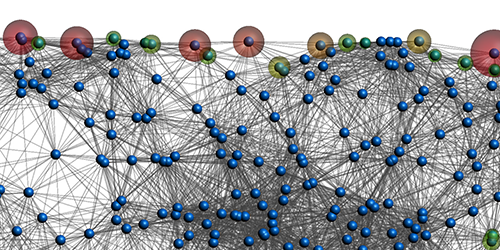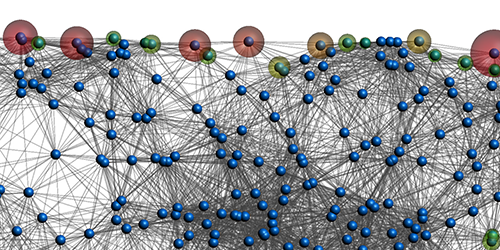Glass Materials Could Be Topological Insulators
Topological insulators are insulating in their interior but conduct electricity on their surface. These unique surface states, which are robust against defects and other imperfections, make these materials potentially useful in quantum computing and other applications. All known topological insulators are crystals, but new theoretical work demonstrates that amorphous materials, such as glasses, could be topological insulators. This result could significantly broaden the search for new topological materials.
Topological insulators are characterized by certain symmetries. For example, many topological insulators are symmetric under time reversal, meaning the electronic wave functions are unaltered by a flip in the time direction. These symmetries are said to “protect” the surface states, which means the system can’t switch to another state without going through a phase transition. Current efforts to locate new topological insulators generally assume the desired symmetries are generated in an ordered lattice structure, but nothing precludes these symmetries from appearing in a noncrystalline material.
Adhip Agarwala and Vijay Shenoy from the Indian Institute of Science in Bangalore have investigated whether topological behavior could emerge in amorphous systems. In their study, they assume a box with a large number of lattice sites arranged randomly. Each site can host electrons in one of several energy levels, and electrons can hop between neighboring sites. The authors tuned parameters, such as the lattice density and the spacing of energy levels, and found that the modeled materials could exhibit symmetry-protected surface currents in certain cases. The results suggest that topological insulators could be made by creating glasses with strong spin-orbit coupling or by randomly placing atoms of other elements inside a normal insulator.
This research is published in Physical Review Letters.
–Michael Schirber
Michael Schirber is a Corresponding Editor for Physics based in Lyon, France.





